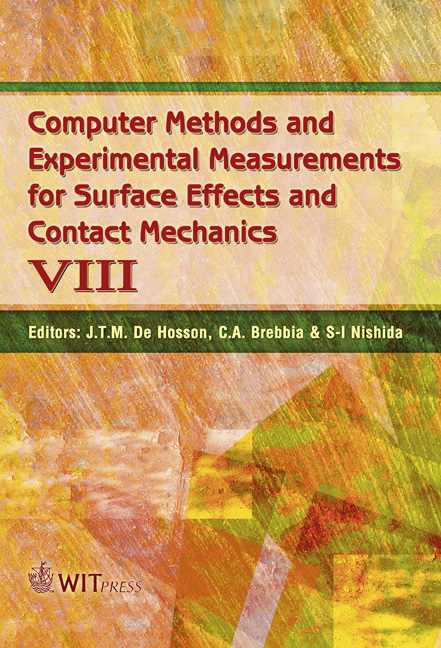Efficient Modelling Of Contact Interfaces Of Joints In Built-up Structures
Price
Free (open access)
Transaction
Volume
55
Pages
11
Published
2007
Size
1,340 kb
Paper DOI
10.2495/SECM070191
Copyright
WIT Press
Author(s)
L. Gaul & M. Mayer
Abstract
This paper introduces an improved approach to model contact interfaces of fixed joints in finite element analysis (FEA) with regard to prediction of the vibration behaviour of built-up structures. The approach consists of two parts: (1) the development of a suitable, new contact model which considers the most important physical effects of wave propagation over the contact interface; and (2) the implementation of the contact model in commercial finite element software. The new model is based on the contact models of Hertz and Mindlin for the contact of a single spherical asperity with an elastic plane. The Hertzian microscopicmodel for normal contact is then generalized with a statistical approach for rough surfaces introduced by Greenwood to a macroscopic normal contact model for engineering surfaces. To model the macroscopic tangential contact, a new model based on Mindlins approach is introduced which accounts accurately for microslip effects and considers the dependence of tangential contact behaviour on the normal pressure. For implementing the contact model in FEA, a special isoparametric contact element, the so-called zero thickness element, is programmed. The use of this element compared with existing contact algorithms has some major advantages with regard to the application of modelling the contact in fixed joints considered in this paper. The introduced approach is verified by simulating the vibration behaviour of a built-up structure and proving the prediction quality by comparing simulation results with experimental data. Keywords: contact mechanics, contact elements, joints, joint modelling, microslip, contact damping, hysteresis model, evolution equation.
Keywords
contact mechanics, contact elements, joints, joint modelling, microslip, contact damping, hysteresis model, evolution equation.





